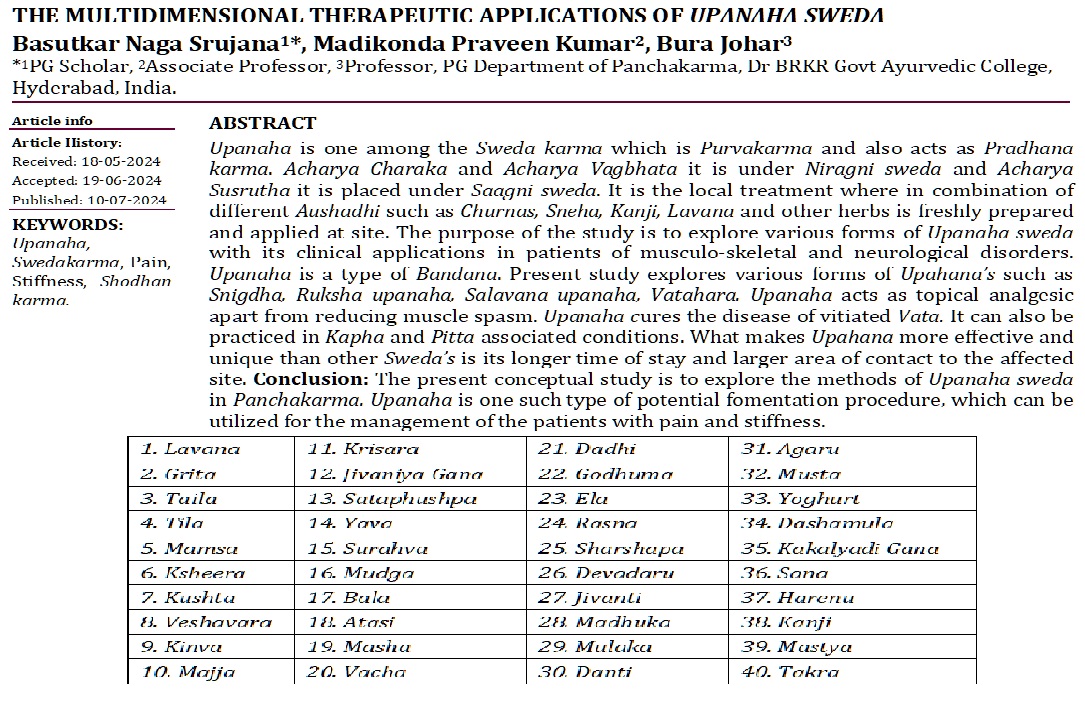The Multidimensional Therapeutic Applications of Upanaha Sweda
DOI:
https://doi.org/10.47070/ayushdhara.v11i3.1513Keywords:
Upanaha, Swedakarma, Pain, Stiffness, Shodhan karmaAbstract
Upanaha is one among the Sweda karma which is Purvakarma and also acts as Pradhana karma. Acharya Charaka and Acharya Vagbhata it is under Niragni sweda and Acharya Susrutha it is placed under Saagni sweda. It is the local treatment where in combination of different Aushadhi such as Churnas, Sneha, Kanji, Lavana and other herbs is freshly prepared and applied at site. The purpose of the study is to explore various forms of Upanaha sweda with its clinical applications in patients of musculo-skeletal and neurological disorders. Upanaha is a type of Bandana. Present study explores various forms of Upahana’s such as Snigdha, Ruksha upanaha, Salavana upanaha, Vatahara. Upanaha acts as topical analgesic apart from reducing muscle spasm. Upanaha cures the disease of vitiated Vata. It can also be practiced in Kapha and Pitta associated conditions. What makes Upahana more effective and unique than other Sweda’s is its longer time of stay and larger area of contact to the affected site. Conclusion: The present conceptual study is to explore the methods of Upanaha sweda in Panchakarma. Upanaha is one such type of potential fomentation procedure, which can be utilized for the management of the patients with pain and stiffness.
Downloads

Downloads
Published
Issue
Section
License
Copyright (c) 2024 AYUSHDHARA

This work is licensed under a Creative Commons Attribution-NonCommercial-ShareAlike 4.0 International License.


